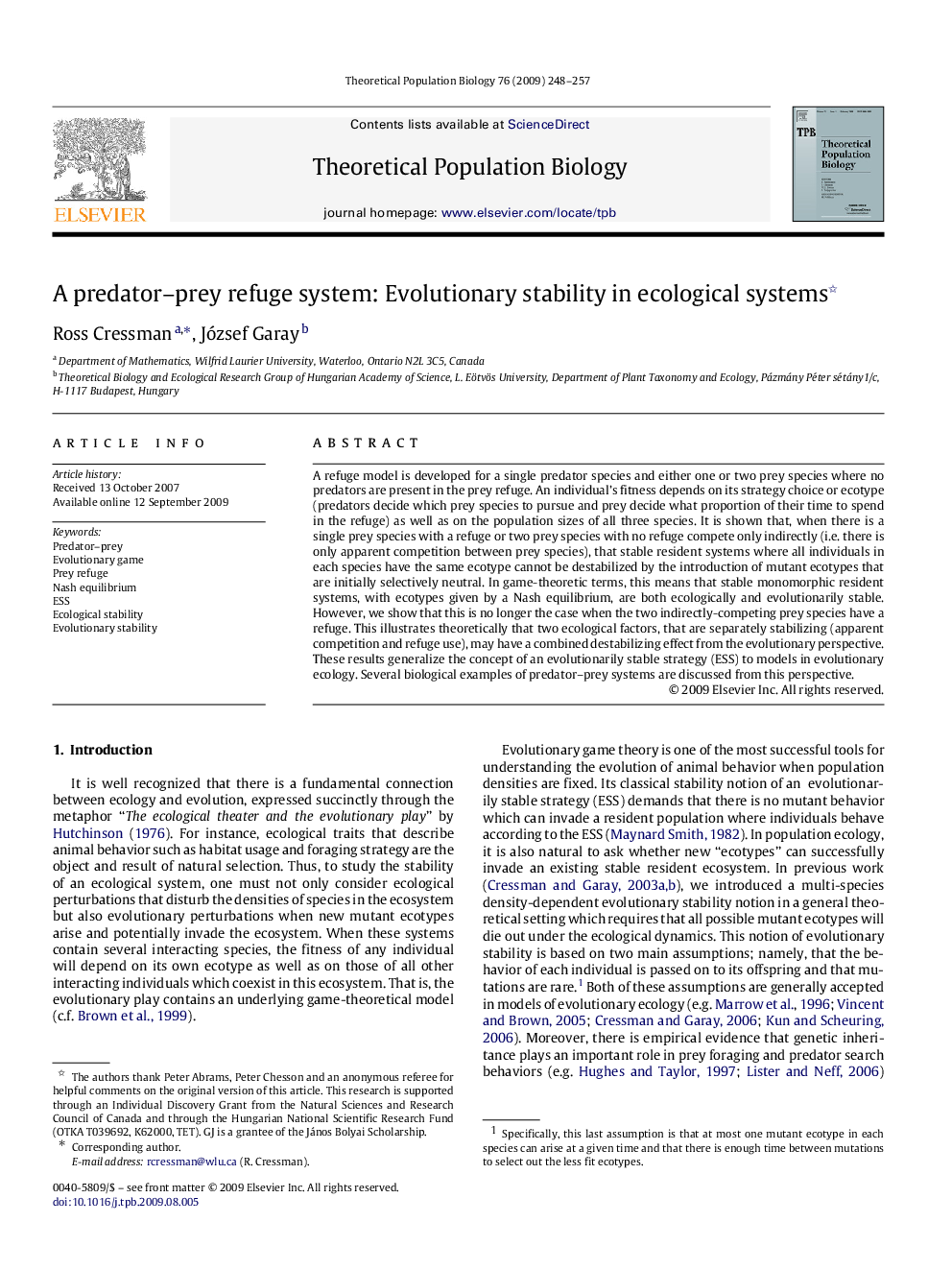| Article ID | Journal | Published Year | Pages | File Type |
|---|---|---|---|---|
| 4502893 | Theoretical Population Biology | 2009 | 10 Pages |
Abstract
A refuge model is developed for a single predator species and either one or two prey species where no predators are present in the prey refuge. An individual's fitness depends on its strategy choice or ecotype (predators decide which prey species to pursue and prey decide what proportion of their time to spend in the refuge) as well as on the population sizes of all three species. It is shown that, when there is a single prey species with a refuge or two prey species with no refuge compete only indirectly (i.e. there is only apparent competition between prey species), that stable resident systems where all individuals in each species have the same ecotype cannot be destabilized by the introduction of mutant ecotypes that are initially selectively neutral. In game-theoretic terms, this means that stable monomorphic resident systems, with ecotypes given by a Nash equilibrium, are both ecologically and evolutionarily stable. However, we show that this is no longer the case when the two indirectly-competing prey species have a refuge. This illustrates theoretically that two ecological factors, that are separately stabilizing (apparent competition and refuge use), may have a combined destabilizing effect from the evolutionary perspective. These results generalize the concept of an evolutionarily stable strategy (ESS) to models in evolutionary ecology. Several biological examples of predator-prey systems are discussed from this perspective.
Keywords
Related Topics
Life Sciences
Agricultural and Biological Sciences
Agricultural and Biological Sciences (General)
Authors
Ross Cressman, József Garay,
